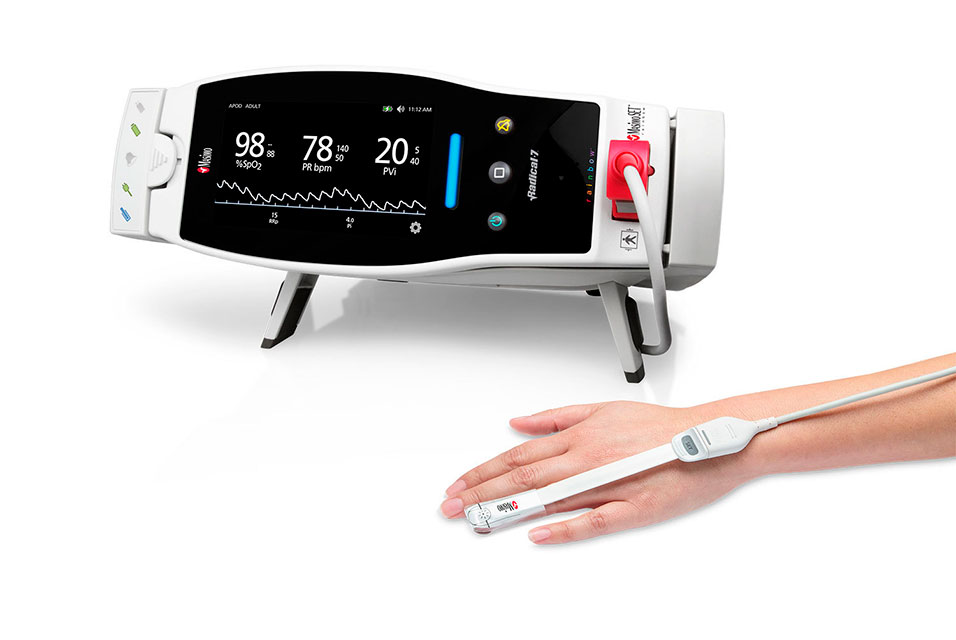NEUCHATEL.- Masimo announced the findings of a study published in the Journal of Applied Physiology in which Dr. Marina García-de-Acilu and colleagues at the Vall d’Hebron University Hospital in Barcelona evaluated the utility of Masimo PVi® as a noninvasive method of predicting preload responsiveness in patients treated with nasal high-flow (NHF) therapy. They found that PVi may identify preload responders and noted that PVi may therefore be used in the “day-to-day clinical decision-making process in critically ill patients treated with NHF, helping to provide adequate resuscitation volume.”1 More than 100 independent studies have demonstrated the utility of PVi as an indicator of fluid responsiveness.2 This is the first time PVi has been evaluated in patients treated with NHF therapy.
Noting the potential convenience of a noninvasive method of predicting fluid responsiveness in NHF patients, the researchers sought to evaluate whether PVi, which is noninvasive and easy to use, could play such a role. To do so, they compared PVi to reference measurements—stroke volume (SV) and cardiac output (CO)—in 20 adult ICU patients with acute respiratory failure (ARF) supported by NHF (flow ≥ 30 L/min). SV and CO were measured using transthoracic echocardiography (TTE) using a portable echocardiogram. PVi was measured using a Masimo Radical-7® Pulse CO-Oximeter® with a pulse oximetry sensor attached to the finger. Within the first 24 hours of NHF support, the patients’ SV/CO and PVi were assessed. Passive leg raising (PLR) was performed and SV/CO and PVi were then reassessed. Preload responsiveness was defined as a ≥ 10% increase in SV after PLR. A fluid challenge was then conducted by administering a 250-mL saline solution to patients who were found to be preload responders (12 of the 20 patients). SV/CO and PVi were measured again after the fluid challenge in these patients.
The researchers found that preload responders showed higher baseline PVi values and ΔPVi after PLR. PVi and ΔPVi after PLR showed “excellent diagnostic accuracy for predicting preload responsiveness.” At a baseline cut-off value of 16%, PVi had sensitivity of 91.7% and specificity of 87.8% for discriminating between preload responders and non-responders; a change of 2% or more in PVi allowed for discrimination between the two groups with 100% sensitivity and specificity. Additionally, the researchers found that ΔPVi after PLR and after fluid challenge were strongly correlated (r = 0.84, p < 0.001).
The researchers concluded, “This physiological study suggests that PVi might predict preload responsiveness in hypoxemic ARF patients treated with NHF. Further research should focus on validating these results and analyze whether PVi-guided fluid administration can improve outcomes in NHF patients.”
The researchers also noted that PVi may not be sufficient to identify preload responders in all patients using NHF, hypothesizing that the intrathoracic pressures delivered by NHF are lower than those generated during invasive mechanical ventilation and that therefore a certain degree of hypoperfusion might potentially be required to effect changes in baseline PVi.
The accuracy of PVi in predicting fluid responsiveness is variable and influenced by numerous patient, procedure, and device-related factors. PVi measures the variation in the plethysmography amplitude but does not provide measurements of stroke volume or cardiac output. Fluid management decisions should be based on a complete assessment of the patient’s condition and should not be based solely on PVi.
In the U.S., PVi is cleared as a noninvasive, dynamic indicator of fluid responsiveness in select populations of mechanically ventilated adult patients.









